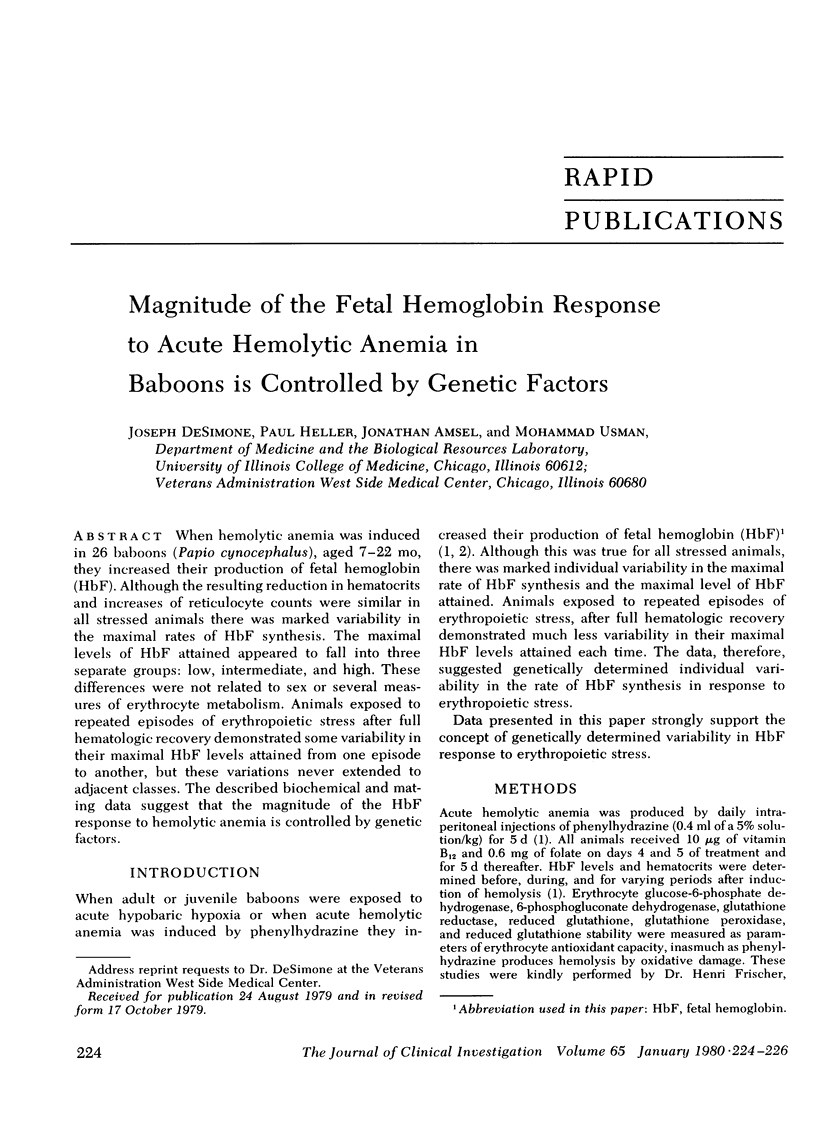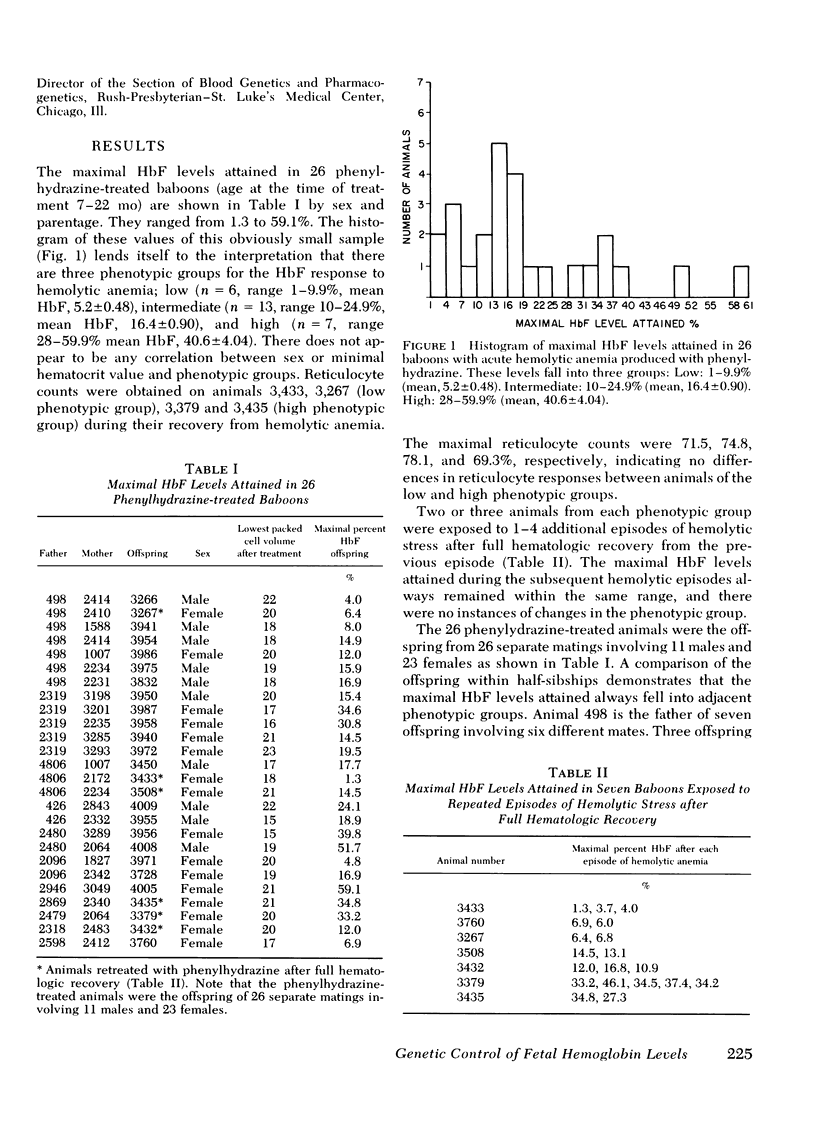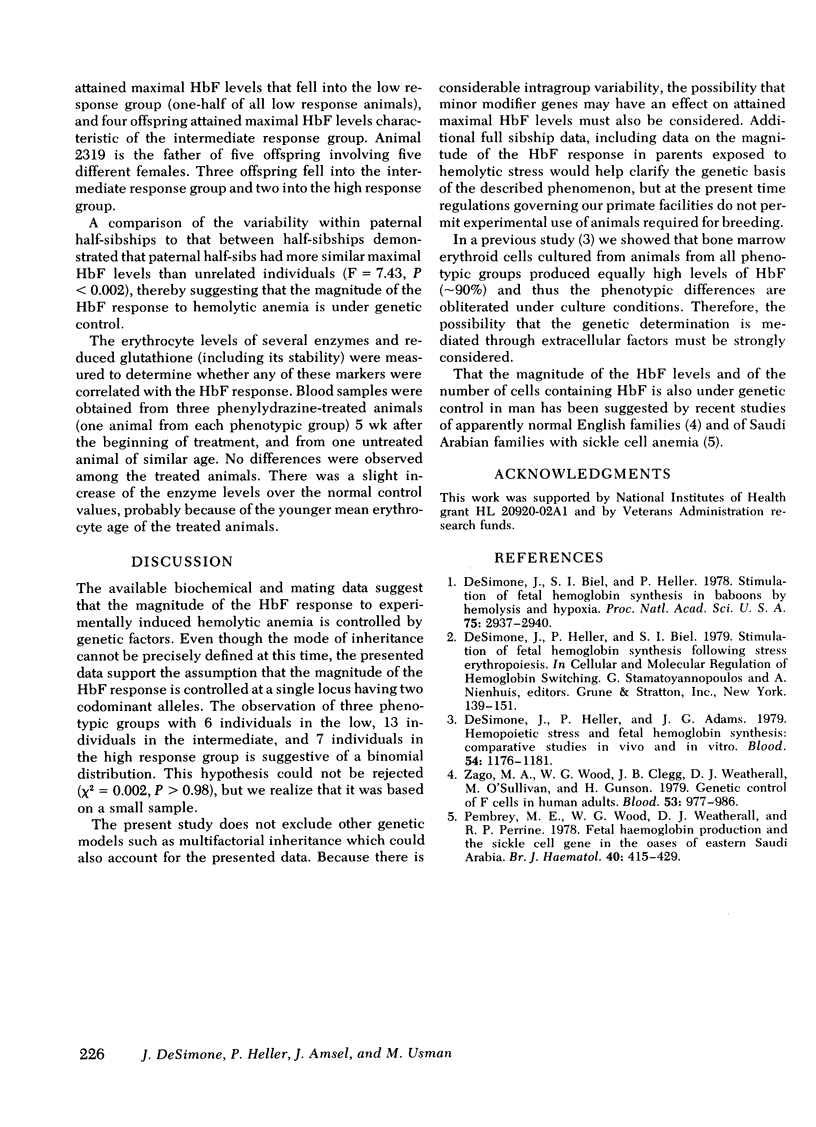Abstract
When hemolytic anemia was induced in 26 baboons (Papio cynocephalus), aged 7-22 mo, they increased their production of fetal hemoglobin (HbF). Although the resulting reduction in hematocrits and increases of reticulocyte counts were similar in all stressed animals there was marked variability in the maximal rates of HbF synthesis. The maximal levels of HbF attained appeared to fall into three separate groups: low, intermediate, and high. These differences were not related to sex or several measures of erythrocyte metabolism. Animals exposed to repeated episodes of erythropoietic stress after full hematologic recovery demonstrated some variability in their maximal HbF levels attained from one episode to another, but these variations never extended to adjacent classes. The described biochemical and mating data suggest that the magnitude of the HbF response to hemolytic anemia is controlled by genetic factors.
Full text
PDF


Selected References
These references are in PubMed. This may not be the complete list of references from this article.
- DeSimone J., Biel S. I., Heller P. Stimulation of fetal hemoglobin synthesis in baboons by hemolysis and hypoxia. Proc Natl Acad Sci U S A. 1978 Jun;75(6):2937–2940. doi: 10.1073/pnas.75.6.2937. [DOI] [PMC free article] [PubMed] [Google Scholar]
- DeSimone J., Heller P., Adams J. G. Hemopoietic stress and fetal hemoglobin synthesis: comparative studies in vivo and in vitro. Blood. 1979 Nov;54(5):1176–1181. [PubMed] [Google Scholar]
- Pembrey M. E., Wood W. G., Weatherall D. J., Perrine R. P. Fetal haemoglobin production and the sickle gene in the oases of Eastern Saudi Arabia. Br J Haematol. 1978 Nov;40(3):415–429. doi: 10.1111/j.1365-2141.1978.tb05813.x. [DOI] [PubMed] [Google Scholar]
- Zago M. A., Wood W. G., Clegg J. B., Weatherall D. J., O'Sullivan M., Gunson H. Genetic control of F cells in human adults. Blood. 1979 May;53(5):977–986. [PubMed] [Google Scholar]


